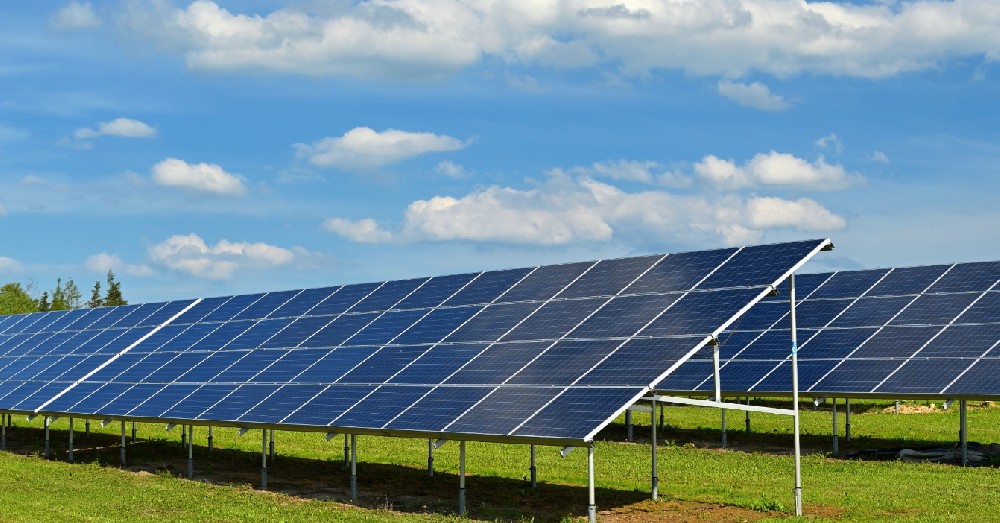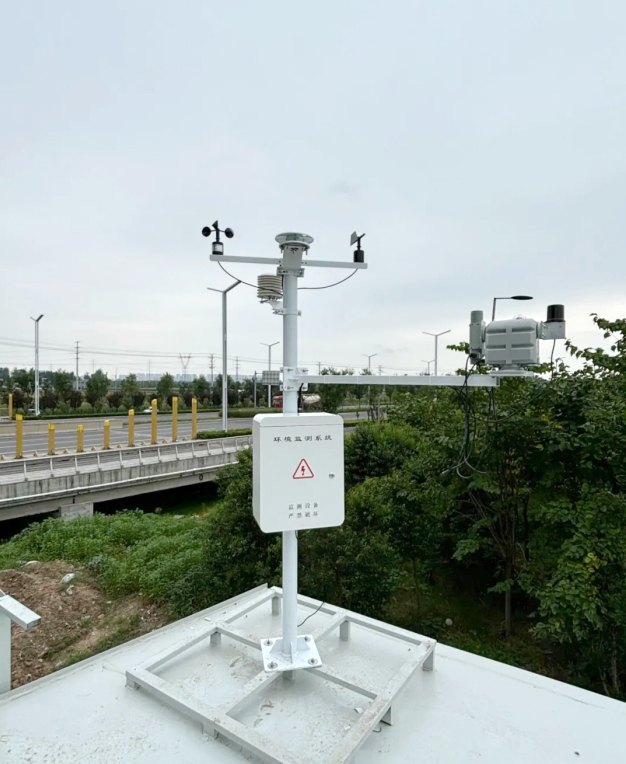

— Blogs —
—Products—
 Consumer hotline +8618073152920
Consumer hotline +8618073152920 WhatsApp:+8615367865107
Address:Room 102, District D, Houhu Industrial Park, Yuelu District, Changsha City, Hunan Province, China
Product knowledge
Time:2025-04-01 16:27:51 Popularity:65
In the context of the growing global demand for clean energy, photovoltaic (PV) power generation, as a pillar of renewable energy, is rapidly gaining popularity. However, the power generation efficiency and long-term stability of PV power plants highly depend on the environmental weather conditions in which they are located. To address this, photovoltaic meteorological stations have emerged as a key technology for improving PV system performance and optimizing operation and maintenance (O&M). This article will delve into the functions, structure, application scenarios, and significant role of photovoltaic meteorological stations in advancing the development of green energy, providing clients with comprehensive and practical information.

A photovoltaic meteorological station is an intelligent monitoring device designed specifically for PV power plants. It integrates multiple high-precision sensors that can collect and record key meteorological data that impacts power generation efficiency in real time. These data include global solar radiation, direct radiation, diffuse radiation, ambient temperature, module temperature, wind speed, wind direction, humidity, atmospheric pressure, and even precipitation. By transmitting this information to cloud-based or local management systems, the photovoltaic meteorological station provides real-time feedback and forms the basis for scientific decision-making for power plant managers.
- Real-time Monitoring: Capturing weather changes that affect PV systems, helping to adjust operating strategies in a timely manner.
- O&M Optimization: Identifying potential issues such as module overheating or dust accumulation and guiding maintenance schedules.
- Power Generation Forecasting: Analyzing meteorological data to predict power generation, providing a basis for energy management and return on investment.
The photovoltaic meteorological station is not only a data collection tool but also a critical driver for the photovoltaic industry to advance toward intelligence and precision. By accurately sensing environmental changes, it safeguards the efficient operation and long-term profitability of power plants.

The functions of photovoltaic meteorological stations cover several aspects, from plant planning to daily operations. Below are its primary roles:
By collecting meteorological parameters at high frequencies, the photovoltaic meteorological station provides real-time information to managers. For example, when high temperatures or strong winds are detected, adjustments can be made to the inverter operation mode or the PV panel angle to reduce efficiency loss or prevent equipment damage.
Solar radiation intensity directly impacts the energy absorption of PV panels. The photovoltaic meteorological station helps users analyze system performance and optimize operational parameters by monitoring global radiation, direct radiation, and diffuse radiation.
Real-time monitoring of wind speed and direction can warn of strong winds or sandstorms, assisting users in taking protective measures, such as securing equipment or adjusting the array angle to reduce risks.
The historical data storage feature supports in-depth analysis, such as evaluating optimal cleaning cycles or identifying potential faults, enabling preventive maintenance and extending equipment life.
By forecasting power generation under different weather conditions, the photovoltaic meteorological station provides data for grid scheduling and energy trading, reducing curtailment and improving renewable energy utilization.
Photovoltaic meteorological stations adopt a modular design, allowing users to customize configurations based on project needs. The main components include:
- Automatic Solar Radiation Tracker: Tracks the sun’s position throughout the day to ensure high-precision radiation data.
- Radiation Sensors: Includes global radiation, inclined radiation, and direct radiation sensors, covering multiple radiation types.
- Meteorological Sensors: Monitors parameters like temperature, humidity, wind speed, wind direction, and atmospheric pressure.
- Module Temperature Sensors: Monitors the temperature of PV modules in real time to evaluate their operating state.
- Data Acquisition Host: Responsible for data processing and transmission.
- High-strength Installation Brackets: Utilizes carbon steel dual-pole design to ensure stability and durability.
- Power Supply System: Supports solar-powered (with maintenance-free batteries) or external power sources, adaptable to various scenarios.
- Precision and Reliability: High-precision sensors ensure data quality, even under harsh environmental conditions.
- Flexibility: The modular design allows users to customize according to needs, such as lightweight configurations for distributed stations or comprehensive monitoring functions for large grid-connected plants.
- Durability: The brackets undergo extreme weather testing, with internal wiring designs that prevent cable aging, and a bottom maintenance port for easy upkeep.

Photovoltaic meteorological stations are applicable to various PV systems, including ground-mounted power plants, distributed PV plants, and building-integrated projects. Here are their specific applications:
In large-scale, grid-connected PV plants, photovoltaic meteorological stations support site optimization and operational management through comprehensive monitoring. For example, by combining historical radiation data to calculate the optimal tilt angle, the array can be adjusted to maximize solar energy absorption.
For small-scale distributed projects, such as rooftop PV systems, the photovoltaic meteorological station provides fine-grained data to help users balance self-consumption and grid-connected power supply needs.
At the project’s early stages, the photovoltaic meteorological station can assess solar resource potential, providing a basis for site selection and return on investment forecasting, thus reducing investment risks.
Photovoltaic meteorological stations are also used in atmospheric energy balance studies, thermal stress analysis, and satellite radiation data calibration, contributing to both academic and industrial innovation.
- Efficiency Improvement: By dynamically adjusting the PV panel angle or cleaning schedules, solar energy utilization is optimized.
- Cost Reduction: Smart alerts and preventive maintenance reduce equipment damage and the need for manual intervention.
- Profit Protection: Accurate power generation forecasting supports investment decisions and energy trading.
With advancements in technology, photovoltaic meteorological stations are evolving toward higher levels of intelligence and precision:
- AI Empowerment: Machine learning algorithms analyze meteorological data, predict weather patterns, and generate more accurate operational recommendations.
- Fine-grained Monitoring: Sensor resolution continues to improve to meet the complex data accuracy requirements of large-scale power plants.
- Remote Management: Integrated with cloud platforms, users can access data and receive alerts via mobile phones or computers, enabling unmanned operations.
These advancements make photovoltaic meteorological stations a core component of smart energy systems, not only enhancing plant performance but also fostering the integration of smart grids and green economies.

For photovoltaic clients, the value of a photovoltaic meteorological station is evident:
- Efficient Operation: Real-time monitoring and optimized strategies ensure that the plant operates at its best.
- Economic Returns: Reduced O&M costs, extended equipment life, and increased power generation directly translate to higher profits.
- Environmental Contribution: Supports the widespread adoption of renewable energy and helps achieve carbon neutrality goals.
Whether you are a PV power plant developer, O&M engineer, or investor, the photovoltaic meteorological station can provide reliable data support and smart solutions. It is not only the crystallization of technology but also the guardian of the future of green energy.

With its precise monitoring, intelligent alerts, and efficient O&M capabilities, the photovoltaic meteorological station is becoming an indispensable tool in the PV industry. From real-time data collection to long-term strategy optimization, it provides comprehensive support to plant managers. As global attention to clean energy continues to grow, photovoltaic meteorological stations will continue to innovate, injecting new momentum into the efficient use of solar energy and sustainable development. Choosing a photovoltaic meteorological station is choosing a smarter and greener energy future.
NBL-W-SRS-Solar-radiation-sensor-instruction-manual-V4.0.pdf
NBL-W-HPRS-Solar-Radiation-Sensor-Instruction-Manual-V3.0.pdf
Prev:Photovoltaic Weather Station: Helping Photovoltaic Power Plants Operate Efficiently
Next:Photovoltaic Weather Station: Intelligent Monitoring Helps Photovoltaic Industry
Related recommendations
Sensors & Weather Stations Catalog
Agriculture Sensors and Weather Stations Catalog-NiuBoL.pdf
Weather Stations Catalog-NiuBoL.pdf
Related products
 Combined air temperature and relative humidity sensor
Combined air temperature and relative humidity sensor Soil Moisture Temperature sensor for irrigation
Soil Moisture Temperature sensor for irrigation Soil pH sensor RS485 soil Testing instrument soil ph meter for agriculture
Soil pH sensor RS485 soil Testing instrument soil ph meter for agriculture Wind Speed sensor Output Modbus/RS485/Analog/0-5V/4-20mA
Wind Speed sensor Output Modbus/RS485/Analog/0-5V/4-20mA Tipping bucket rain gauge for weather monitoring auto rainfall sensor RS485/Outdoor/stainless steel
Tipping bucket rain gauge for weather monitoring auto rainfall sensor RS485/Outdoor/stainless steel Pyranometer Solar Radiation Sensor 4-20mA/RS485
Pyranometer Solar Radiation Sensor 4-20mA/RS485
Screenshot, WhatsApp to identify the QR code
WhatsApp number:+8615367865107
(Click on WhatsApp to copy and add friends)